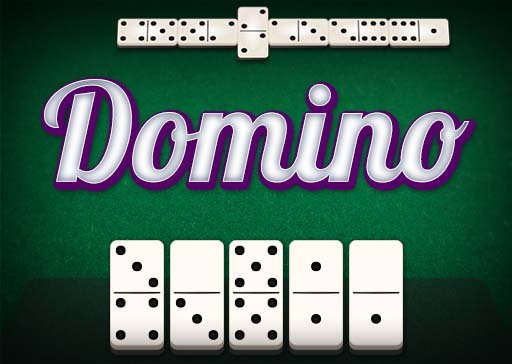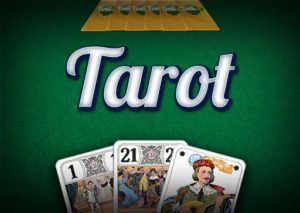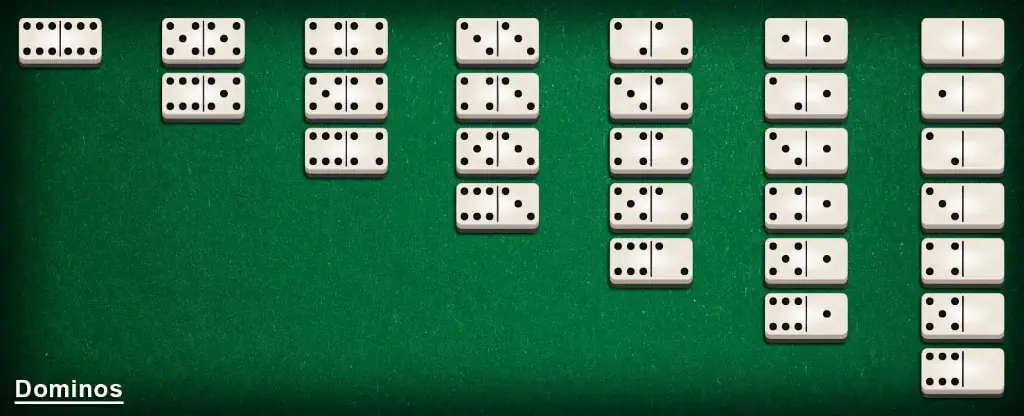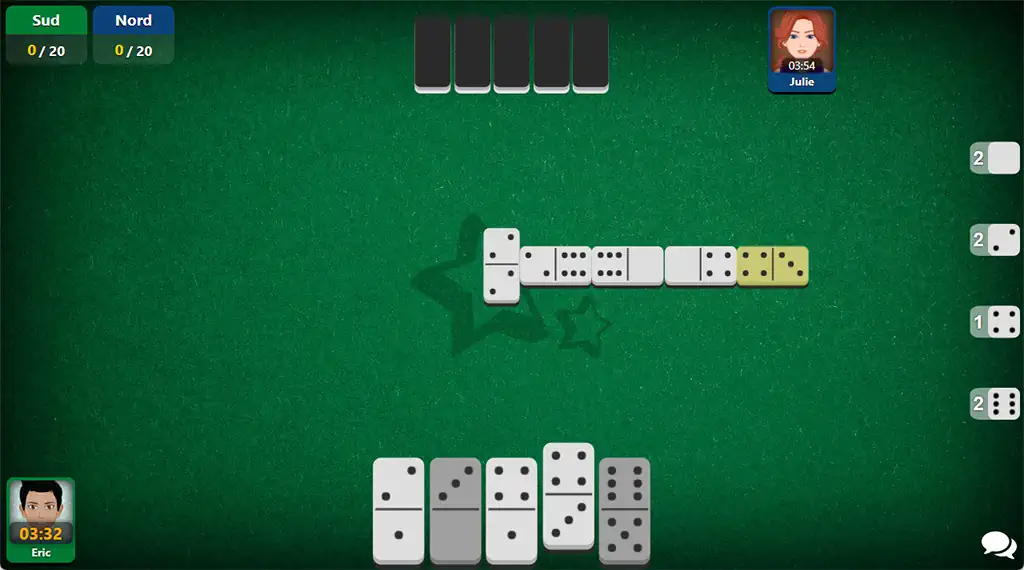




Basic domino strategies
Dominoes is a game of strategy and thinking, where the luck of the draw combines with anticipation and observation skills. While the rules are simple, mastering basic strategies can make a big difference in your chances of winning. Here are some tips to improve your performance and better understand the key mechanics of the game of dominoes.
Understanding the tiles and their combinations
Before diving into strategies, it's crucial to understand that each tile is unique and there are only 28 tiles in a classic domino set (double-six). Each tile has two halves with numbers ranging from 0 to 6. Mastery of the game begins with a good knowledge of these tiles and their possible combinations.
- Double: Double tiles (like 6-6 or 3-3, the tile at the top of each column in the image below) are important because they can act as strategic pivots during the game. They are often used to block moves or open new opportunities.
- Strong and weak tiles: Tiles with high values (like 5-6, 4-6) are considered stronger, while tiles with 0s or 1s are generally weaker.

Duplicate management: a double-edged sword
Doubles are special because they can only be played on themselves. This means they can be difficult to get rid of if misused. However, they can also be very powerful in controlling the game.
Tips for using doubles
- Playing doubles at the start of the game It's often advisable to play your doubles as early as possible. This reduces the risk of being stuck with these tiles at the end of the game, when options may be limited.
- Use doubles to block If you have a double and your opponent seems to be running out of matching tiles, you can use this tile to block his movements.
Observe and anticipate opponents' movements
One of the keys to winning at dominoes is to observe your opponents' game. Take note of the tiles they play and the ones they avoid. For example, if an opponent hasn't played any 5s for several rounds, it's likely that they don't have any. This information can help you block them or force them to draw.
Observation techniques
- Tracking played tiles Pay attention to the numbers played by each player. This will give you clues as to which tiles they do or don't have.
- Blocking the lines of play If you've noticed that your opponent is missing a certain number (e.g., he doesn't have a 3), try playing tiles that require that number to block him and force him to draw.
Balancing your game: a mix of defence and attack
Good domino strategy involves knowing when to attack and when to defend. It's not just a question of placing tiles that directly benefit you, but also of thinking about the repercussions of your moves on your opponent's game.
Offensive strategy
- Lay your strong tiles first Playing your tiles with high values (such as 5 and 6) at the start can be a good strategy for getting rid of large tiles quickly and reducing your remaining points at the end of the game.
- Forcing the opponent to pick If you know your opponent is missing a specific number, make sure both ends of the game require that number, forcing him to draw.

Defensive strategy
- Keeping versatile tiles Keeping tiles with common values (such as 1-2 or 3-4) can help you keep more options open and avoid getting stuck.
- Prevent the opponent from scoring If you know your opponent is close to victory, avoid placing tiles that would give him an opportunity to play and end the game.
Controlling the tempo of the game
As a player, you can control the pace of the game by the tiles you place. If you're in a strong position, you can try to speed up the game by quickly placing tiles that give you an advantage. Conversely, if you're struggling, slowing down the game can give you more options.
- Speed up the game Play your strongest tiles to take control of both ends of the board. This can put pressure on your opponent and limit his options.
- Slow down the game If you're in a bad position, try to lay tiles that open up new possibilities and prolong the game, giving you more time to draw better tiles.
Knowing when to play defensively and when to attack
Sometimes it's necessary to change strategy mid-game. If you start with unfavorable tiles, adopting a defensive approach may be useful until you draw better options. Conversely, if you see an opportunity to attack and end the game, don't let it pass you by.
- Adaptability A good domino player knows how to adapt. If your offensive strategy doesn't work, go on the defensive and try to block your opponent.
Maximize your remaining points at the end of the game
At the end of a game, if you run out of tiles to play or the game stalls, the points remaining in your hand are counted and added to your opponent's score. For this reason, it's crucial to try to reduce the number of points remaining in your hand at the end of the game.
Tips for reducing your points :
- Play your tiles with high values early in the game This reduces your potential points at the end of the game, in the event of a stalemate.
- Provide a block If you see that the game is heading for a stalemate, play accordingly to end up with as few points in your hand as possible.
